Image Source: iStock/zuper_electracat
The digital nomad lifestyle has gone from a fringe dream to a mainstream reality in just a few years. Armed with laptops and Wi-Fi, people have been hopping from Bali to Barcelona, blending work and travel in ways the previous generation could hardly imagine. By 2025, it’s no longer a question of whether this lifestyle is possible—it clearly is. But the debate is whether it’s sustainable in the long run.
On paper, the idea sounds perfect: lower living costs in sunny destinations, freedom to choose your environment, and the ability to keep a career afloat while exploring the world. But beneath the Instagram-worthy sunsets lies a more complex reality. Rising living costs in nomad hubs, visa hurdles, burnout, and even environmental concerns are forcing many to rethink whether this life can go on indefinitely. So, is the digital nomad dream here to stay, or is it evolving into something new entirely? Well, let’s find out.
The Current State of Digital Nomadism in 2025
We’re living in a moment where digital nomadism is becoming increasingly normal. As of 2025, 17.3 million people identify as digital nomads in the US alone, and over 40 million globally. Remote work, travel freedom, and global connectivity have opened doors that used to feel exclusive. But as more people jump in, some growing pains are also showing up.
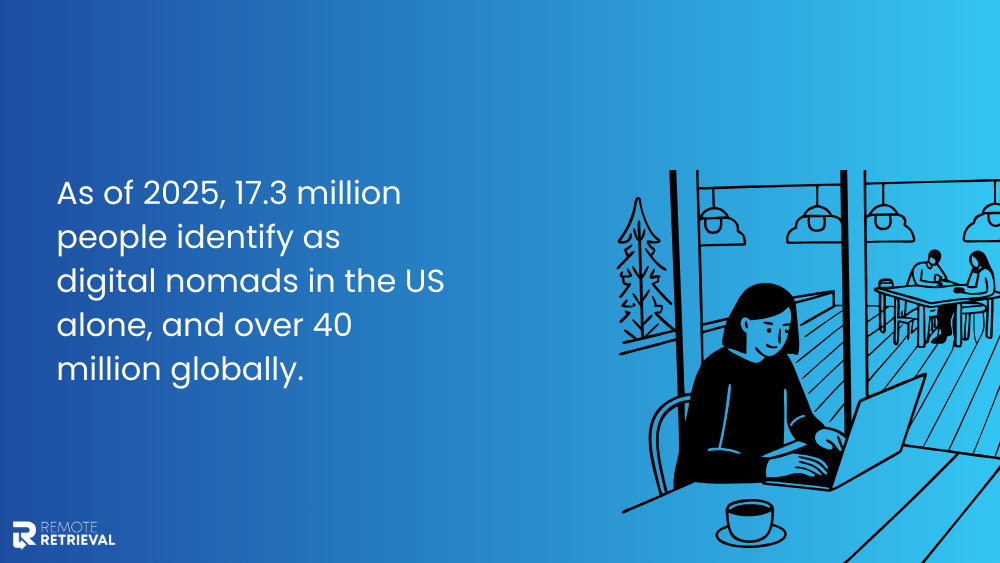
• Remote Work Has Normalized the Lifestyle
What was once an experiment during the pandemic has now become a permanent shift. Many companies continue to embrace remote or hybrid setups, giving employees the freedom to work from anywhere. It is estimated that more than half, 56% of digital nomads hold traditional full-time jobs.
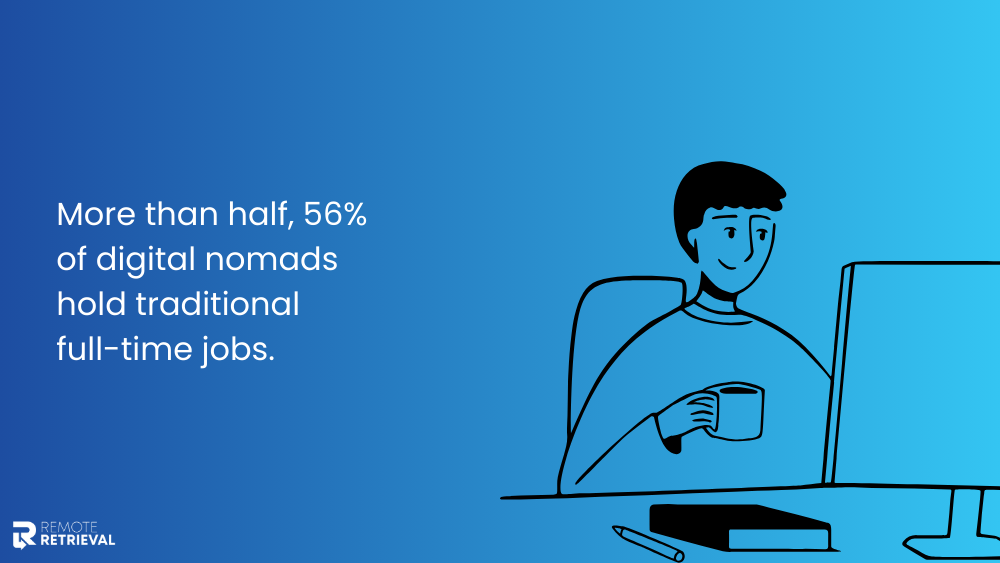
However, many still prefer stability when it comes to working environments: about 59% of nomads work from a home office rather than coworking spaces or cafes. This has allowed more people than ever to test the waters of digital nomadism, whether it’s a three-month stint abroad or a full-time, location-independent life.
• Global Hotspots Are Thriving—But Changing
Did you know that Bangkok, Phnom Penh, and Hanoi are among the most affordable and fastest-growing nomad hubs in Southeast Asia? They offer monthly living costs under £800 plus a reliable internet infrastructure.
Also, Lisbon, Mexico City, and Chiang Mai are buzzing nomad cities that offer coworking spaces, strong Wi-Fi, and communities of like-minded professionals. But with their rise in popularity has come a surge in rents, overcrowding, and some local pushback. What was once a cheap escape is now becoming pricier and more competitive.
|
City |
Key Appeal / Stats |
Why it’s Attractive |
|
Lisbon, Portugal |
Frequently ranks #1 in nomad city lists. Great visa options, good internet, safe and affordable. (Atlas & Boots) |
Mild climate, relaxed pace, lots of coworking spaces and a welcoming expat community. |
|
Bangkok, Thailand |
Among the most visited by digital nomads (~2%-share of trips). (Coolest Gadgets) |
Extremely affordable food & living, great connectivity, lively culture. |
|
Mexico City, Mexico |
Cost of living significantly lower than US. Internet speeds ~142 Mbps download. Growing nomad community. (Nomad Magazine) |
Big city amenities + culture + food + relatively cheap accommodations. |
|
Seoul, South Korea |
High growth in nomad traffic (+20-30%) in recent years. Excellent infrastructure. (Nomads.com) |
Modern, efficient public transport, strong digital / tech environment. |
|
Tbilisi, Georgia |
Affordable, friendly cost of living; digital nomad visas or easy long-stay opportunities; big nomad ranking. (blog.savvynomad.io) |
Scenic surroundings, relaxed visas, increasing coworking options. |
|
Tokyo, Japan |
Among the highest “liked” cities by nomads; high safety and infrastructure. (Nomads.com) |
Top-tier public transport, cleanliness, and cultural richness. |
|
Porto, Portugal |
High rating among nomads for quality of life, lower cost than Lisbon, scenic location. (Nomads.com) |
Cozy size, good weather, close to beaches, food & wine. |
|
Chiang Mai, Thailand |
Longstanding favorite among remote workers. Affordable, pleasant climate, good expat community. (blog.savvynomad.io) |
Many digital nomads stay 2-3 months; good value for rent + lifestyle. |
|
Madrid, Spain |
Cultural capital, good digital nomad visa options, strong public transit & amenities. (blog.savvynomad.io) |
Great food, warm weather, cosmopolitan feel. |
|
Berlin, Germany |
Startup / tech ecosystem, arts & culture, international vibe. (The Nomad Almanac) |
English is widely understood, lots of coworking spaces, good public infrastructure. |
|
Dubai, UAE |
Rapid growth in nomad populations; excellent infrastructure and international connectivity. (Nomads.com) |
Luxurious amenities, safety, modern transport, strong international community. |
|
Valencia, Spain |
Growing fast as nomad hub; cheaper than larger Spanish cities; good quality of life. (Nomads.com) |
Beaches, climate, slower pace, friendly cost of living. |
|
Buenos Aires, Argentina |
Among top-growing Latin hubs; affordable lifestyle, strong cultural scene. (Nomads.com) |
Rich cultural life, good food, cheaper lodging, attractive for long stays. |
|
Munich, Germany |
High quality of life, strong economy; though more expensive, many nomads value stability, amenities. (blog.savvynomad.io) |
Clean, safe, great public services, many international flights. |
|
Singapore |
Very high infrastructure & safety; traffic often ranks high in nomad surveys. (Nomads.com) |
Strong internet, efficiency, clean city, great public transport. |
• Governments Are Playing Along
Another big shift in 2025 is the growing list of countries offering digital nomad visas. From Portugal to Costa Rica, governments are creating legal pathways for remote workers to stay longer and contribute to local economies. While exciting, these visas also come with tax obligations and paperwork that add layers of complexity to the lifestyle.
• Cracks in the Dream
Even with all the progress, the cracks are hard to ignore. Visa restrictions, unstable freelance income, and the creeping costs of living in “cheap” destinations are making some wonder if the golden age of nomadism has already peaked. It’s clear the lifestyle is still possible but not without trade-offs.
Is the Digital Nomad Lifestyle Truly Sustainable?
It’s one thing to see Instagram posts of laptops by the beach, but long-term sustainability is a different story. The lifestyle isn’t just about whether you can work remotely—it’s about whether you can keep it up without burning out, going broke, or running into bigger challenges. To really answer this, we need to look at sustainability from different angles: money, environment, lifestyle, and career.
1. Economic Sustainability
At the heart of the digital nomad lifestyle lies one pressing question: can it pay the bills long term? While the freedom to work from anywhere is appealing, financial sustainability isn’t guaranteed. Living costs in popular hubs have risen steadily, with places like Lisbon and Bali seeing noticeable rent spikes as nomad communities grow. What was once a budget-friendly escape now often requires careful planning. The added cost of lost devices is another pressing concern here.
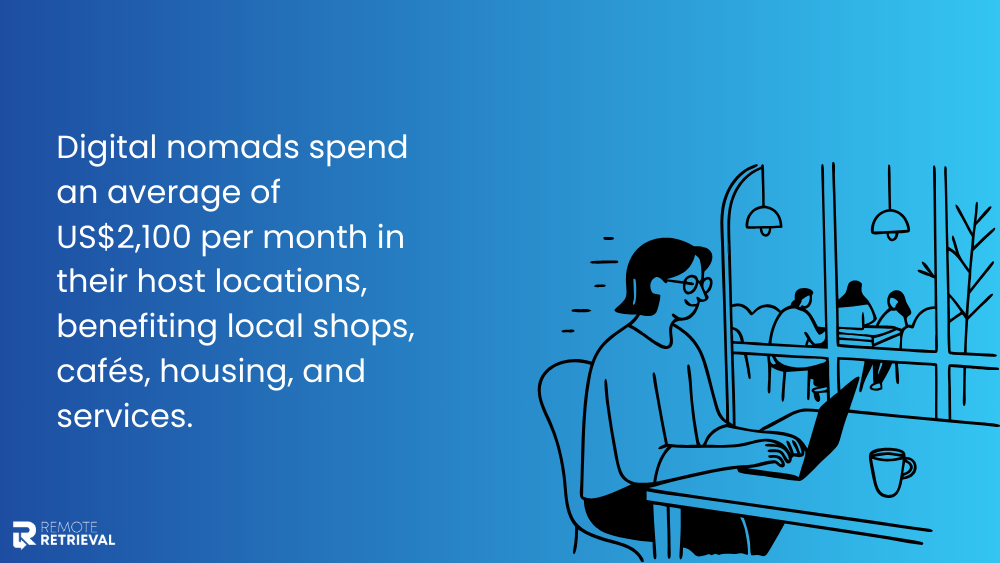
On the flip side, many nomads are earning solid incomes—one survey in 2025 put the average digital nomad salary at around $124,000 a year, though the median sits lower at roughly $85,000, showing how wide the income gap can be. The real challenge is balancing income stability with fluctuating expenses, visa costs, and taxes across borders. For those who budget wisely and choose destinations strategically, the lifestyle can remain economically viable—but it’s far from a carefree financial path.
2. Environmental Sustainability
One of the less glamorous sides of digital nomadism is its environmental cost. Constant flights, short-term stays, and the demand for infrastructure in popular nomad hubs can quietly add up to a significant remote work carbon footprint. Hopping between continents every few months might sound exciting, but the emissions from frequent air travel make it one of the least sustainable aspects of the lifestyle. Add to that the pressure on housing, transport, and local utilities in smaller cities suddenly flooded with nomads, and the impact becomes more obvious.
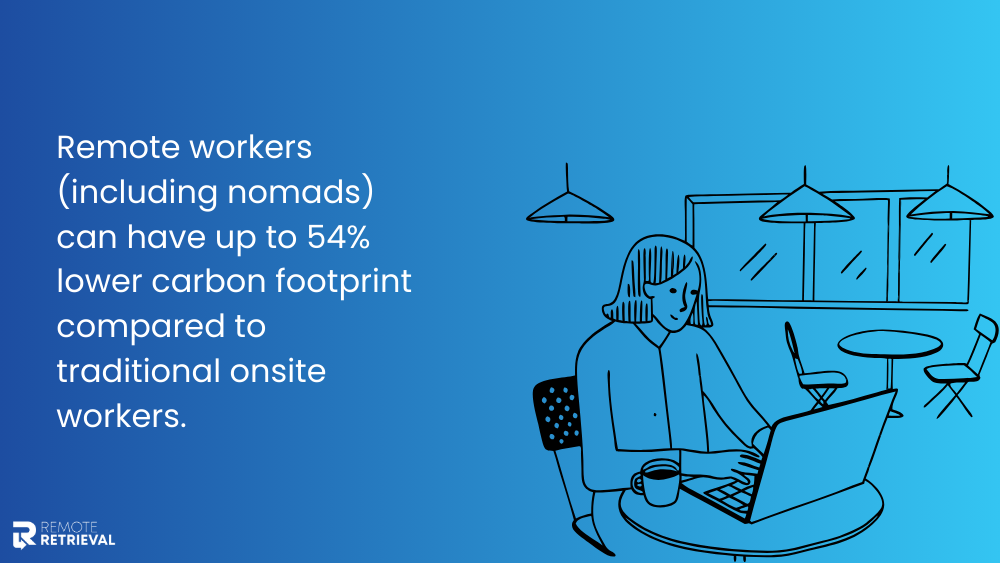
Some are responding with “slow travel,” choosing to stay longer in one destination to reduce flights and integrate better into communities. Others are prioritizing eco-conscious destinations or investing in carbon offsets. While remote work itself reduces daily commuting emissions, the bigger question is whether nomads can balance personal freedom with environmental responsibility. Sustainability here will depend on how willing travellers are to adapt their habits.
3. Personal and Lifestyle Sustainability
While money and logistics matter, the real test of nomad life often comes down to how it feels day to day. Constantly moving can be thrilling at first, but over time, it can lead to burnout, loneliness, or even decision fatigue. Building lasting friendships or maintaining a steady routine is harder when your home changes every few months. This is why many nomads are shifting toward slower travel and embracing digital minimalism by cutting down on unnecessary screen time, travel clutter, and distractions to create more balance. By focusing only on the essentials, nomads find it easier to protect their mental health and enjoy a more intentional lifestyle.
Sustainability here isn’t just about how long you can keep travelling, but whether you can do it without sacrificing your wellbeing. A grounded approach, with community ties and mindful habits, makes the lifestyle far more livable in the long run.
|
Metric |
What’s Happening |
Why It Matters |
|
Work-Life Balance |
~57% of digital nomads report their work-life balance has improved. (Worldmetrics) |
Having flexibility over location, hours, and environment seems to reduce burnout risk. |
|
Life Satisfaction / Happiness |
76% say they are happier since becoming nomads. (Worldmetrics) |
Shifting away from fixed routines and traditional offices often boosts well-being. |
|
Mental Health Improvement |
~70% believe remote nomad life has positively impacted their mental health. (Worldmetrics) |
Reduced commuting, more time outdoors, and greater autonomy contribute. |
|
Loneliness / Isolation |
26-40% experience loneliness or isolation at various times. (Worldmetrics) |
Despite the freedom and travel, nomads often miss consistent community or close relationships. |
|
Struggle to Unplug |
~25-33% say they have trouble disconnecting outside work hours. (DigiWander) |
Being ‘always on’ can erode rest and recovery, even in beautiful locations. |
|
Lifestyle Over Salary |
~53% prioritize remote work or flexible lifestyle over higher pay. (Worldmetrics) |
Reflects a shift in values toward personal time, experiences, and wellbeing. |
|
Income Satisfaction |
~79% of digital nomads report being highly satisfied with both their work & lifestyle. (MBO Partners) |
Happiness often comes less from absolute income and more from lifestyle control + autonomy. |
4. Professional Sustainability
No matter how appealing the nomadic lifestyle sounds, it only works if professionals can keep their careers steady. Companies today are more open to distributed teams, but this shift comes with new demands. Employers want reliability, communication, and measurable results even when their people are logging in from a beach or mountain. That’s where strategies for managing remote workforce tech come into play. From project management tools like Asana or Trello to secure communication platforms such as Slack or Zoom, businesses are investing heavily to make collaboration seamless across time zones.
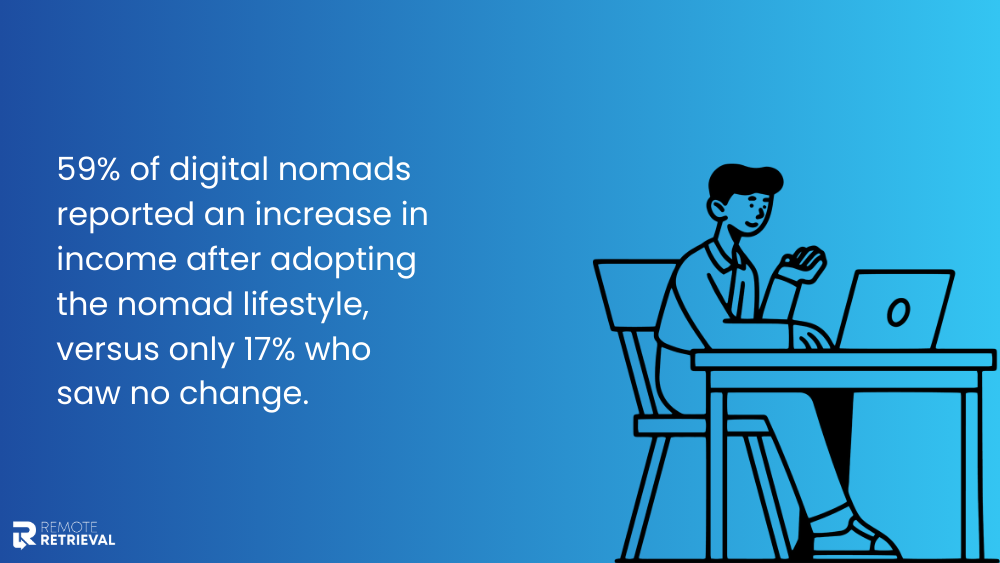
Owl Labs’ 2024 State of Hybrid Work mentions that many employers are investing more in systems and tech for remote collaboration and communication: 78% of respondents said their companies have such tools. For digital nomads, this means sustainability depends not just on personal discipline but also on how well organizations continue to adapt. As long as companies refine their systems and expectations, remote careers—and by extension, nomadic living—can thrive for years ahead.
The Future of Digital Nomadism
The digital nomad lifestyle has already shifted dramatically in the last decade, but what’s next? As technology, global policies, and personal values evolve, nomadism is poised to take new shapes. While some changes will make this lifestyle easier, others may introduce fresh challenges. Let’s take a closer look at what the next decade might hold.
• AI-Driven Work and VR Collaboration
The rise of AI is set to reshape how nomads work. From automated project management to AI assistants that handle scheduling and data analysis, remote professionals will be able to get more done in less time. Virtual Reality (VR) and Augmented Reality (AR) are also expected to bridge the gap between physical and digital workplaces.
Imagine attending a team meeting in a VR boardroom from a beach café in Lisbon—it’s not sci-fi anymore, it’s on the horizon. These tools could make location-independent work smoother, reducing the friction of time zones and physical distance.
• Global Hiring and Borderless Teams
As companies continue shifting toward remote-first structures, hiring is no longer tied to physical office hubs. Instead, businesses are assembling borderless teams where talent comes from every corner of the globe. For digital nomads, this opens the door to more opportunities than ever before. However, with this global reach comes new challenges in HR management—like equipment returns, onboarding, and compliance.
That’s where reliable laptop return services for human resource teams come in handy to help companies streamline logistics and keep operations running smoothly, no matter where employees are located. For nomads, this means less worry about administrative hurdles and more focus on the work itself, though competition for roles is fiercer than ever.
• Government Regulations: Visas and Taxes
While the lifestyle is appealing, governments are starting to take notice. Dozens of countries now offer digital nomad visas, but along with new pathways, stricter rules may follow. Expect clearer taxation policies and tighter visa regulations as nations balance welcoming remote workers with protecting local economies. For nomads, this means doing more homework—understanding the fine print of where they can live, how long they can stay, and what financial obligations come with it.
• The Rise of Hybrid Nomadism
Not every nomad wants to be on the road forever. A growing trend is hybrid nomadism—splitting time between travel and a home base. This gives professionals the freedom to explore new places while still enjoying stability, a community, and consistent routines. Think three months abroad, nine months at home. This balance could become the sustainable middle ground for those who crave both adventure and belonging.
Sustainability Practices for Long-Term Viability
For digital nomadism to be more than a trend, it needs to stand the test of time—and that means building sustainable habits. Nomads who want to thrive long term are adopting practices that balance adventure with responsibility:
-
Eco-Travel Choices: Fewer short-haul flights, more train journeys, and longer stays to cut down on carbon footprints.
-
Community Building: Joining co-living and co-working hubs that create social ties and reduce isolation.
-
Work-Life Balance: Setting boundaries to avoid burnout, especially when work can creep into every corner of life.
-
Minimalist Living: Traveling light and focusing on essentials, which not only reduces waste but also makes mobility easier.
-
Local Integration: Supporting local businesses and engaging with communities rather than living as a passing outsider.
By blending these practices into their routines, nomads can make their lifestyles more sustainable—not just for themselves but also for the environments and cultures they engage with. A study reveals that 36.2 million US citizens are expected to work remotely by 2025, an 87% increase from pre-landemic levels. Interesting, right?
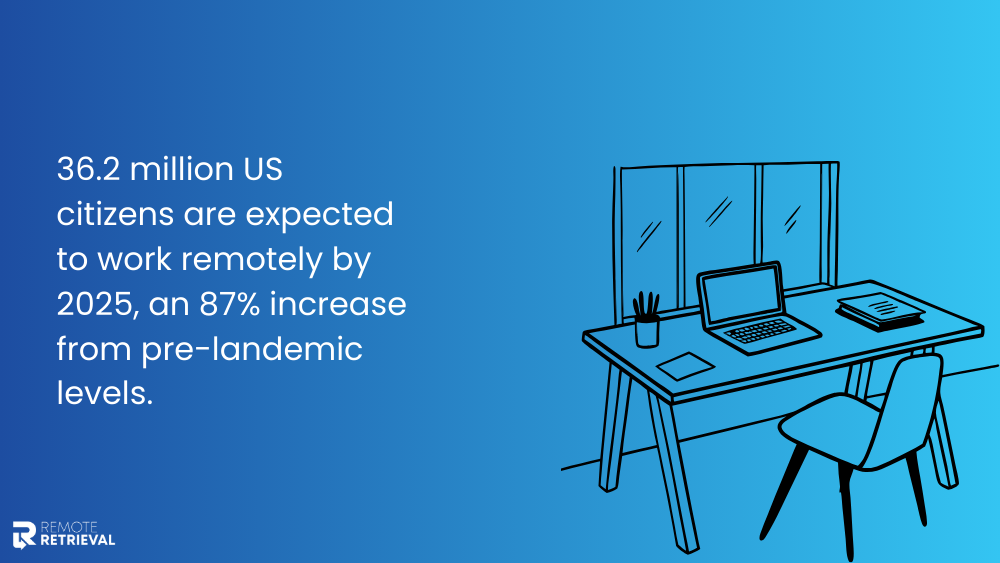
The Road Ahead for Digital Nomads
The digital nomad lifestyle continues to capture the imagination, offering freedom, flexibility, and the thrill of working from anywhere. But as we’ve seen, it isn’t without its hurdles. From economic stability and environmental impact to government regulations and personal well-being, sustainability remains the biggest question mark for this way of life.
The core shift may come in how nomadism is practiced. Instead of the fast-paced, city-hopping version that dominated its early years, we’re likely to see a move toward slower, more grounded approaches—where balance, community, and intentional living take centre stage.
In 2025 and beyond, the future of digital nomadism will hinge on adaptability. Individuals will need to refine how they travel and work, while governments, companies, and technology systems will need to continue supporting location-independent lifestyles. If both sides can adjust, digital nomadism won’t just survive—it will evolve into a sustainable, long-term way of living.
